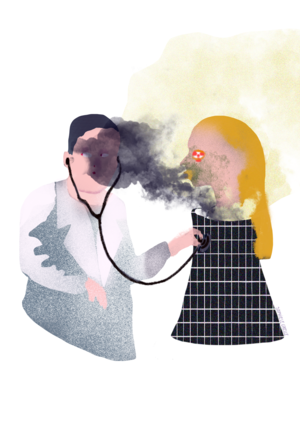
Julian Assange
636 weeks of deprivation of liberty for telling the truth
636 weeks of deprivation of liberty for telling the truth
The cause of collapsology (the study of the collapse of our thermo-industrial society) seems to be an accepted one, at least in the pages of this journal. However, one notion is rarely discussed: what will happen to our nuclear power plants in such a context? This issue is surrounded by a real taboo. In one of the only publications on the subject, Pablo Servigne points out that writings on nuclear power after oil are rare. The information he gives us is however crucial: » A nuclear power plant is the only energy facility that cannot be shut down or even abandoned overnight. It takes months of work, energy and handling to cool the reactors. But if there is an economic collapse, how can the technicians and engineers be kept at their posts? If there is a breakdown in energy supply, and in particular in oil, will all the shutdown procedures be operational? »(1). Piero San Giorgio writes: » We cannot let hundreds of abandoned nuclear reactors melt down one after another, expelling deadly radiation into the air and waterways. « (2)
But is this issue so serious? Can we hope that the political and industrial leaders have taken the necessary measures for a rapid and safe shutdown of the reactors? It should be noted that the simple emergency shutdown planned in the event of a problem is only a temporary measure: it is necessary to continuously cool the reactor, which still produces 7% of its operating energy(3). This, given the capacity of a reactor, is still enormous. When we know that the federal plan for a nuclear incident stops at INES‑5(4) because a level 6 or 7 incident would be of such a magnitude that the authorities could not manage it, this is not really reassuring. We know that there are currently 450 civilian nuclear reactors in operation worldwide, 144 of which are in Europe(5) (the largest concentration of population and active reactors). In view of these elements, we can easily understand why this dreaded subject seems to be the bête noire of collapsology.
We found it instructive to read the studies related to the risk of terrorism. The information is even more confidential. Laure Noualhat in her documentary(6) does not reveal all the information gathered during their investigation and Greenpeace France only delivers a summary of their report(7). What we learn is nevertheless eloquent. Let’s take the question of spent fuel storage pools. This one is highly radioactive. It must be cooled by a constant supply of water. The pools are simple basins without any particular protection. Fukushima highlighted the risk of a massive release of radioactivity in case of a sustained loss of cooling capacity. When we know that among the probable consequences of a collapse are cuts in the water supply… Do we have to imagine the employees of the power plants carrying buckets of water to ensure cooling? Without abundant oil, we will not have at our disposal the excessive means we have today to manage accidents. Moreover, it will not be a question of one-off accidents, like Chernobyl or Fukushima, but of reactors and cooling basins that would become permanent sources of deadly radioactivity in short periods…

An Austrian university has conducted an extensive study on radioactive contamination in the event of a major accident in European reactors(8). For each reactor, in 88 meteorological situations during the year 1995, we can see how the radioactive clouds would spread. This makes it possible to realize that in case of a major accident, a single reactor would have the capacity to irradiate the whole of Europe. However, let us remember that we have 144 reactors in operation today on our continent(9).
We do not know what a major accident in all the reactors would represent at the global level. The question is worth asking because it is a possible scenario. The consequences of the end of abundant oil on the management of power plants is a subject of extreme gravity. The sense of horror and helplessness it evokes is unparalleled. Pablo Servigne says: » I don’t advise going any further… if you want to preserve a certain mental health. « (10) We believe that we must go further, beyond this feeling of horror and powerlessness. Let’s remember that, when it comes to collapsology, lucidity and courage are required. Let us have the audacity to face this question and not succumb to the temptation of denial or taboo. Let’s address it publicly. Let’s disseminate it as widely as possible. As Bouli Lanners says: » We have to communicate (…) people have to know. Because when people are aware of the reality of things, a new collective consciousness is created and we can also put pressure on the government.(11).
A fatal prognosis has just been made. We have the right, even the duty, to refuse the inevitability of it. In cases of « miraculous » remissions of advanced cancer, two essential factors for recovery are the refusal of this fate (to be distinguished from denial) and a significant personal commitment to the healing process(12). Hope, after having had the lucidity and courage to admit the facts, is no longer an option, it is a moral duty, an unavoidable ingredient to keep a chance to save.
As for the personal commitment, it can be considered as follows: from the moment we are aware of the post-collapse nuclear risk, the most urgent thing is to obtain the rapid shutdown of all the reactors. Let’s put all our energy into achieving this goal(13). And let’s get out of the radio silence.
Thierry Bourgeois and Laetitia Harutunian